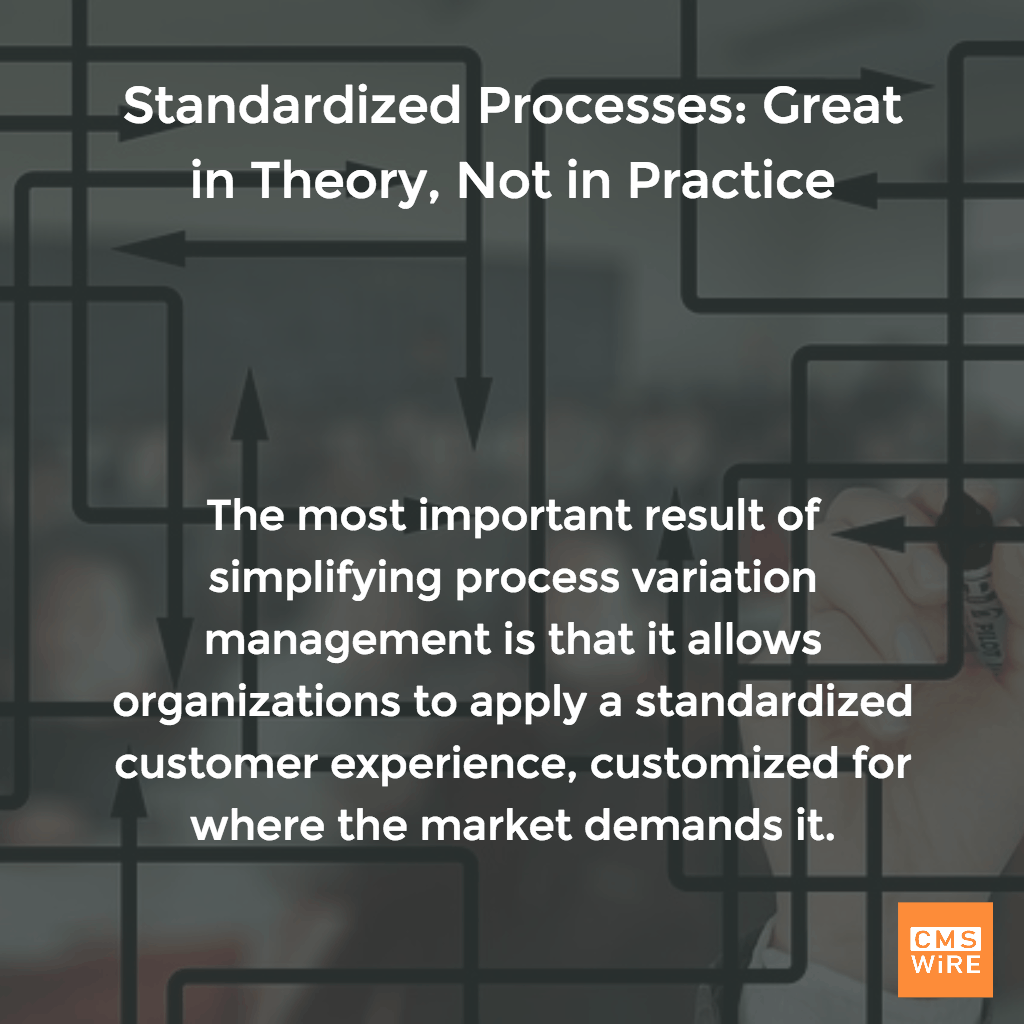ARCHIVED CONTENT
You are viewing ARCHIVED CONTENT released online between 1 April 2010 and 24 August 2018 or content that has been selectively archived and is no longer active. Content in this archive is NOT UPDATED, and links may not function.Extract from article by Ivan Seselj
Managing process variations is still unnecessarily complex, costly and inconsistent. Experts agree. Steve Stanton, an analyst with FCB Partners, says: “Ninety percent of the organizations I know have failed at standardization.”
It’s the dirty secret of process management. Process owners know their so-called “standard” processes do not meet the requirements of the teams expected to apply them. And they know these processes can’t be applied, which means they may as well not exist.
3 Approaches to Process Standardization (and the Headaches They Induce)
You can usually find three common responses to the problem of process standardization:
- Create standardized processes at a high-level only.
- Create mega-processes that include every possible variation.
- Owners are free to create separate individual variant processes.
Scenario one is the most common for early maturity organizations. It creates high level information that is so summarized that it’s no use to anyone — for day to day process guidance, or as a platform from which to navigate future change.
Scenario two is the most common response from technical teams and large transformation projects. Their attempt to tame all this complexity is often detailed, technically correct process documents that apply approved process notation standards.
The main challenge with this approach has been its poor history of winning engagement from teams after these projects end. They find the processes incomprehensible. And another failure point — it can stall agility and future change because process owners aren’t confident applying changes and improvements to this documentation. They’re not ‘living’ documents.
The third scenario is the most common for organizations further along the process maturity curve. Separate individual variant processes, owned, managed and changed independently creates the administrative and change management headaches you would expect from such an approach.
Read the complete article at Standardized Processes: Great in Theory, Not in Practice






















